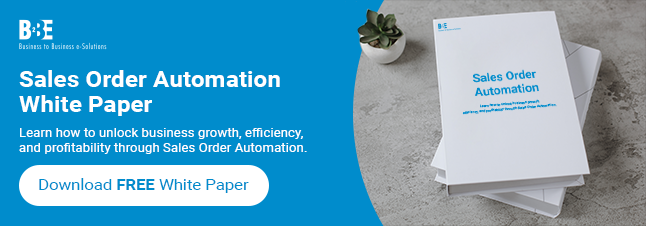Order fulfilment is a critical component in the supply chain, bridging the gap between receiving orders and delivering products to customers. Yet, with the pace of digital transformation, businesses are increasingly turning to automation to streamline their order fulfilment process.
Poll results
In our most recent LinkedIn poll, we asked our followers about their current order fulfilment process and how automated it is.
How automated is your current order fulfilment process?
- Fully automated
- Partially automated
- Completely manual
Fully automated
The fact that 29% of respondents have achieved a fully automated order fulfilment process highlights the growing recognition of automation’s benefits. Fully automated systems can handle every stage of fulfilment, from order entry and inventory management to shipping and delivery tracking. This reduces manual intervention, minimises errors, and improves accuracy, all of which directly benefits customer satisfaction and loyalty. With data flowing seamlessly, businesses can therefore maintain real-time insights into order statuses, inventory levels, and shipment tracking, empowering proactive decision-making.
Partially automated
71% of respondents voted partial automation as the most common approach. It often involves a blend of manual and automated tasks. For instance, businesses might automate inventory tracking and order entry but rely on manual steps for packaging and dispatching. This approach can certainly offer advantages, like reducing repetitive tasks and managing costs more gradually. However, it also has some limitations. Manual involvement can create bottlenecks and increase the likelihood of errors, which may ultimately delay delivery times.
For businesses with a partially automated order fulfilment system, transitioning to a fully automated process may be a strategic next step. The shift can be incremental, starting by automating high-impact areas like inventory management or dispatching, to gradually improve efficiency across the fulfilment cycle.
Completely manual
Finally, none of our respondents indicated that they are using a completely manual order fulfilment process. This reflects a trend away from manual, labour-intensive fulfilment systems toward more integrated, tech-driven solutions. As customer expectations for speed and accuracy in deliveries continue to rise, fully manual fulfilment can struggle to keep pace. This can lead to delayed shipments, overstocking, or even missed orders as a result. For any businesses still partially reliant on manual processes, exploring automation options—even in incremental steps—could open new opportunities for speed, accuracy, and customer satisfaction.
Learn more about B2BE’s range of Order To Cash solutions, including 销售订单自动化.
More information
B2BE’s experience in the supply chain sector allows our customers to build, expand and adapt successfully, enabling greater effectiveness. To engage with B2BE and offer feedback on what matters most to you and your business, make sure to follow us on LinkedIn and across social media. You can also vote in our latest LinkedIn poll. If you’d like to discuss your supply chain strategy, get in touch with us.

